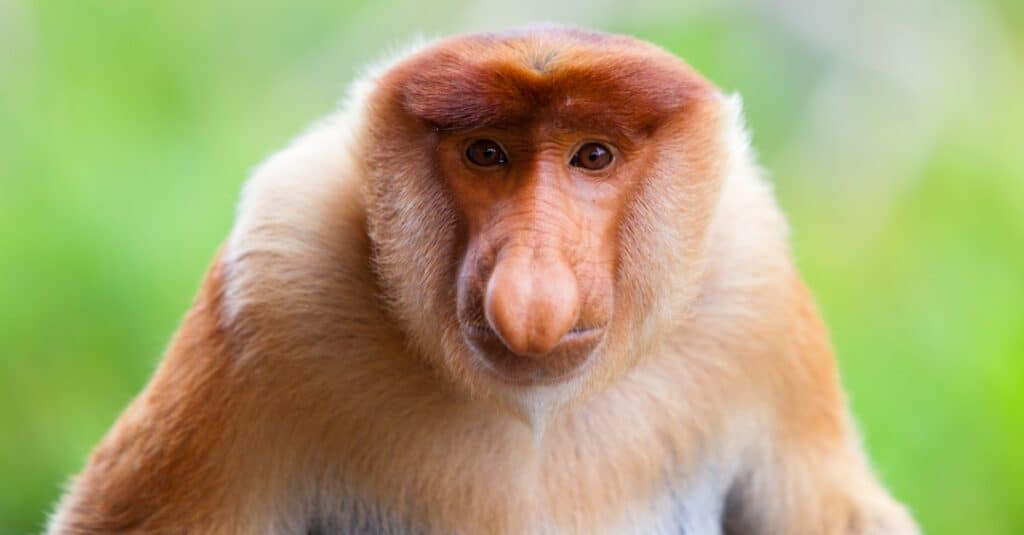A proboscis can occur in mammals, insects, and other creatures. The most obvious example would be the elongated nose of the proboscis monkey.
Proboscis Meaning
A proboscis is an elongated appendage from the face or head of an invertebrate or vertebrate animal. It is typically either a long nose or mouthpart used for feeding.
The word “proboscis” is Ancient Greek for “before” and “to nourish.”

Proboscis monkeys use their large proboscises to attract mates.
©David Evison/Shutterstock.com
Proboscis Pronunciation and Plural Forms
Proboscis is pronounced [pruh | bos | is].
The plural for proboscis is proboscides or proboscises.
Proboscis Examples
A proboscis can occur in mammals, insects, and other creatures. The most obvious example would be the elongated nose of the proboscis monkey. And their peculiar appendages serve an unusual purpose, different from most animals with a proboscis. Researchers believe their long noses are used to attract mates. They use them to amplify their calls, which is attractive to females. The echo chamber within the appendage can also intimidate rival males.
Another example would be an anteater, which uses its elongated head and nose to reach inside termite mounds and ant hills. They also possess extremely long, thin tongues to slurp out their prey.

Hummingbird Hawk-Moths use their long proboscis like a straw to suck nectar from flowers.
©aabeele/Shutterstock.com
Invertebrates With Proboscis
Invertebrates are animals without a backbone or bony skeletons, such as spiders, worms, and snails. The most common form of an invertebrate proboscis is a Lepidoptera mouth part used for sucking and feeding. An example of this would be the elephant hawk moth, which possesses a long proboscis that it extends into the flower to obtain food. Other insects, like mosquitos and butterflies, do this, as well.
Vertebrates With Proboscis
Mammals are vertebrates, and they use their proboscises for feeding, bathing, mating, and defending their territory. Some examples of vertebrates with proboscis include elephants, elephant seals, aardvarks, anteaters, tapirs, elephant shrews, echidnas, proboscis monkeys, and saiga antelopes.



